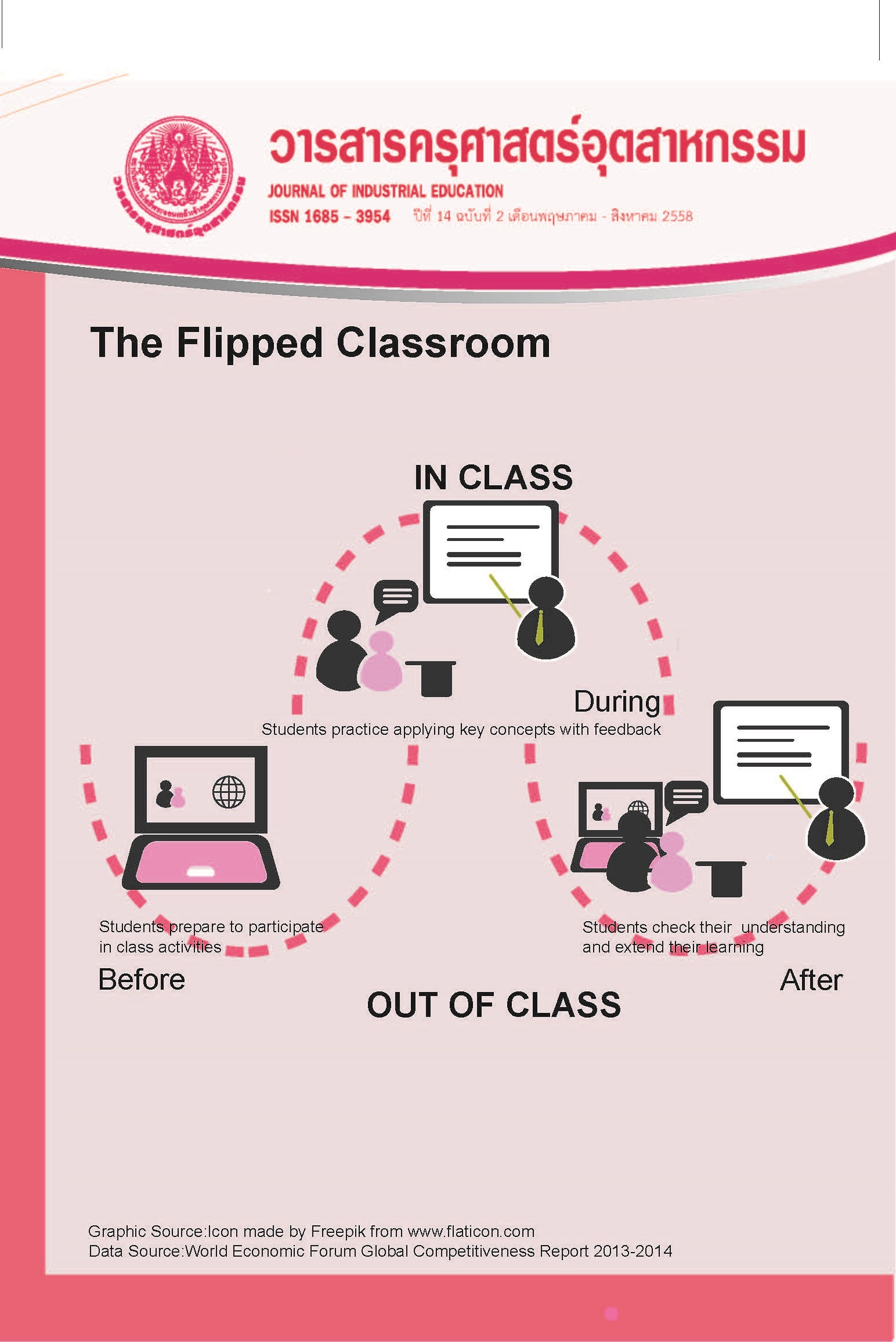A Development of the Causal Models of Organizational Commitment of Teachers under the Office of Vocational Education Commission Central 1
Main Article Content
Abstract
The purposes of this research were 1) To study the level of organizational commitment, organizational characteristics and teacher’s working motivation under the Office of Vocational Education Commission Central 1. 2) to develop and examine the consistency of a causal model of organizational commitment of teachers, developed by empirical data and 3) To study the effects of organizational characteristics and motivation to work on the organizational commitment of Vocational Education Commission Central 1. The sample consisted of 390 participants who were teachers under the Office of Vocational Education Commission Central 1. And 1,234 participants from a Multi-stage Random Sampling. The research variables consisted of 2 endogenous latent variables, 2 exogenous latent variables and 13 observed variables. The questionnaire was used as an instrument for data collection. The reliability level is between .893 - .964. Structural equation modeling used for data analysis. The results were as follows :
1) Teachers under the Office of Vocational Education Commission Central 1 had the level of organizational commitment of teachers in all aspects at a high level: Variable of work characteristics ( = 3.698, S.D.= .533), Variables of organizational characteristics (
= 3.795, S.D.= .518), Variable of Motivation to work (
= 3.879, S.D. = .542) and Variable of Organizational Commitment (
= 3.832, S.D. = .532).
2) The consistency of the Causal Models of Organizational Commitment of Teachers under the Office of Vocational Education Commission Central 1, found that the model is consistent with empirical data and statistics is (c2= 41.376, c2/df= .985, df= 42, P= .498, GFI= .984, AGFI= .965, RMR= .007, RMSEA= .000, CFI = 1.000, TLI = 1.000). The variables in the model explained variance of organizational commitment of teachers to 79 %.
3) The factors with most direct effects the Causal Models of Organizational Commitment of Teacher under the Office of Vocational Education Commission Central 1 had 3 variables: 1. Work characteristics (β = .553) 2. The motivation to work (β = .414) 3. Organizational characteristics (β = .099) and 2 variables qui have an indirect: 1. Work characteristics (β = .800) 2. Organizational characteristics (β = .205) through a variable incentive to work. The factors with most effects were the work characteristics (β = .884).
Article Details
"The opinions and contents including the words in papers are responsibility by the authors."
"ข้อคิดเห็น เนื้อหา รวมทั้งการใช้ภาษาในบทความถือเป็นความรับผิดชอบของผู้เขียน"
References
[2] ธณัฐชา รัตนพันธ์. 2550. การพัฒนาโมเดลเชิง สาเหตุของความผูกพันต่อองค์กร ของพนักงานสายสนับสนุนวิชาการในเขต กรุงเทพมหานครและปริมณฑล. วิทยานิพนธ์ปริญญาครุศาสตร์มหาบัณฑิต สาขาวิชาการวิจัยการศึกษา จุฬาลงกรณ์มหาวิทยาลัย.
[3] Porter, L.W., & Other. 1974. Organizational Commitment, job Satisfaction and Turnover Among Psychiatric technicians. Journal of Applied Psychology, 59(5), p. 603-609.
[4] Clayton, A. P. 1972. Existence, Relatednen, and Growth : Human Needs in Organizational Settings. p. 32. New York: Free Press.
[5] ลัดดา ธาราศักดิ์. 2552. ปัจจัยที่มีผลต่อความผูกพันต่อองค์การของข้าราชการครูในโรงเรียนศรีราชา สังกัดสำนักงานเขตพื้นที่ การศึกษาชลบุรี เขต 3. วิทยานิพนธ์ ปริญญาการศึกษามหาบัณฑิต
[6] กฤตยาวดี เกตุวงศา. 2553. ผลกระทบของคุณลักษณะองค์กรที่มีต่อประสิทธิผลการบริหารความเสี่ยงของสถาบันอุดมศึกษาใน ประเทศไทย. วิทยานิพนธ์ปริญญา บัญชีมหาบัณฑิต มหาวิทยาลัยมหาสารคาม.
[7] เจตสุภา ลลิตอนันต์พงศ์. 2551. การพัฒนาโมเดลเชิงสาเหตุของความผูกพันต่อองค์การ. วิทยานิพนธ์ปริญญาศิลปศาสตร มหาบัณฑิต สาขาวิชาการจิตวิทยา อุตสาหกรรมและองค์การ จุฬาลงกรณ์มหาวิทยาลัย.
[8] นงลักษณ์ วิรัชชัย. 2552. รายงานการสังเคราะห์งานวิจัยเกี่ยวกับคุณภาพการศึกษาไทย : การวิเคราะห์อภิมาน (Meta- analysis). กรุงเทพฯ : สำนักงานเลขาธิการ สภาการศึกษา กระทรวงศึกษาธิการ.
[9] Burk. 2008. Employee Engagement & Retention Management ค้นเมื่อ 15 มีนาคม 2557 จากhttps:// Burk.com/EOS /prac Employee Engagement.htm. (March 15, 2014).
[10] มัณฑนา ตุลยนิษกะ. 2552.ปัจจัยที่มีความสัมพันธ์กับความผูกพันต่อองค์การของบุคลากร กรณีศึกษา คณะวิทยาศาสตร์ จุฬาลงกรณ์มหาวิทยาลัย. วิทยานิพนธ์ ปริญญามหาบัณฑิต มหาวิทยาลัยศิลปากร.
[11] Hackman, J. R., & Oldham, G.R. 1976. Motivation through the design of work: Test of a theory. Organization Behavior & Human Performance, 16(2), p. 250-279.
[12] Steers, R.M., & Porter, L.W. 1983. Motivation and Work Behavior. p. 425-450.New York: McGraw – Hill. Book Company.
[13] ชนาทิพย์ พลเสน วรนารถ แสงมณี และณัฐวุฒิ โรจน์นิรุตติกุล. 2554. แรงจูงใจในการปฏิบัติงานและความผูกพัน ตอองคการของพนักงานระดับปฏิบัติการใน โรงงานอุตสาหกรรมชิ้นส่วนยานยนต์ กรณีศึกษาบริษัท เคแอลเคอินดัสตรี จํากัด. วารสารครุศาสตร์อุตสาหกรรม, 10(3), น. 324-336.

